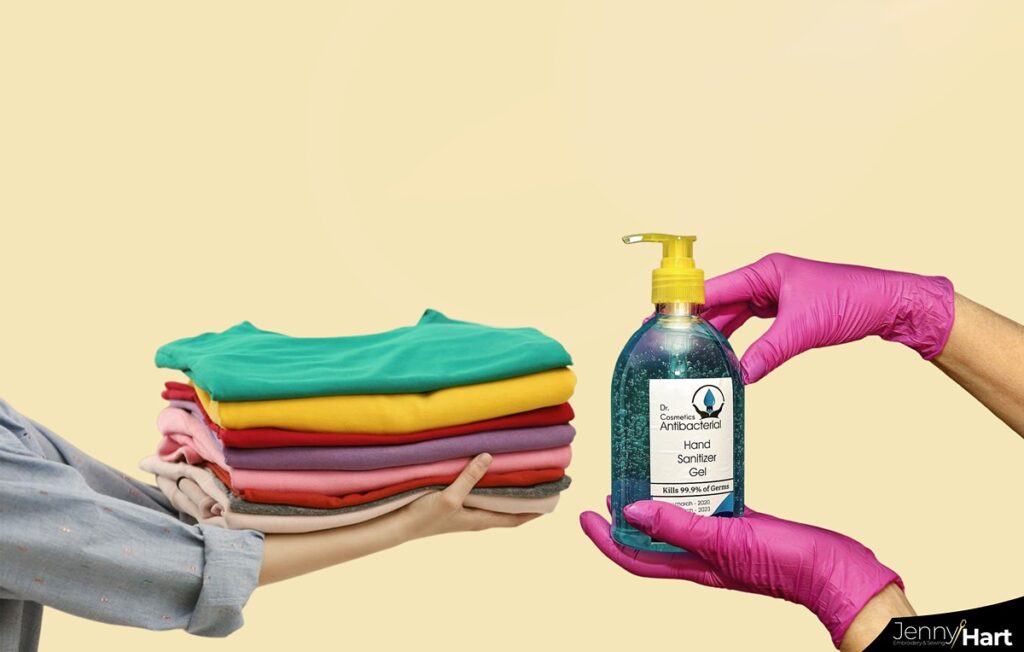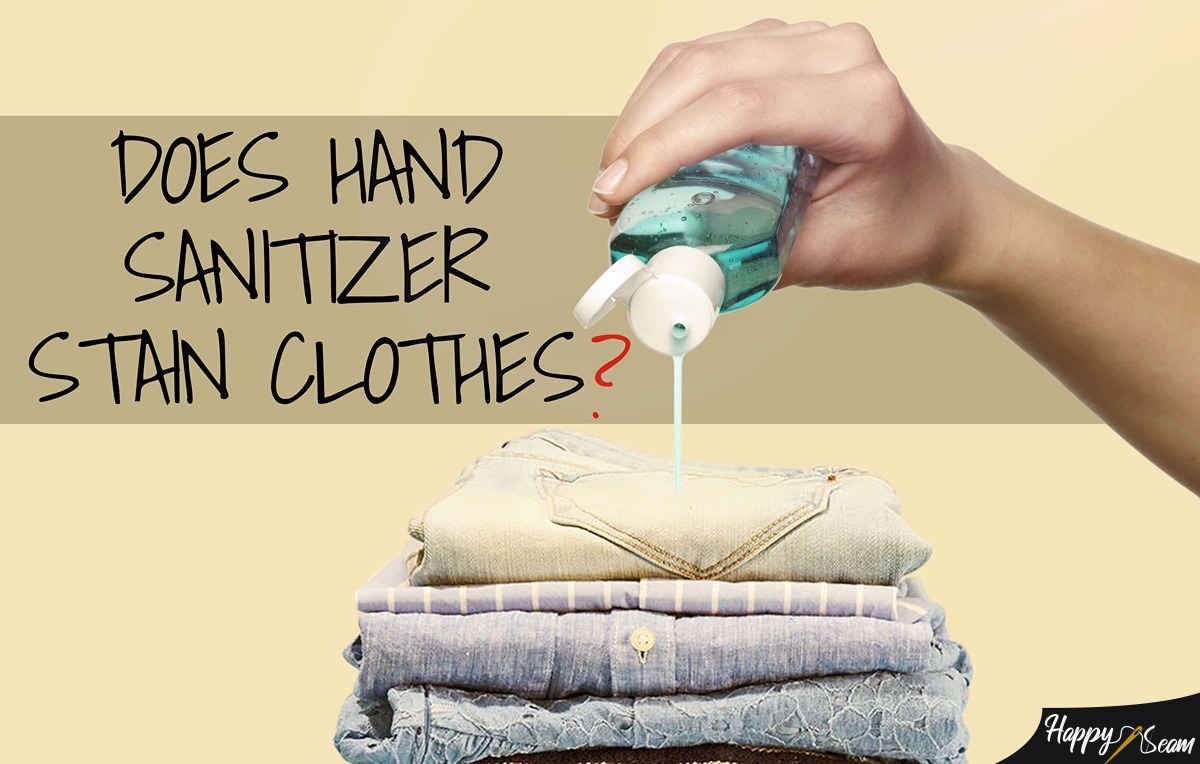Hand sanitizers have become a staple item in today’s time. It is very common to find one in your bag, on the table in a restaurant, or even at an entrance to a hotel. Alongside the massive use of hand sanitizer, we might be seeing little light spots on our clothes more often, so we start to wonder where did they came from. So the question arises, does hand sanitizer stain clothes?
Hand sanitizers do not stain your clothes, but even worse, they can leave a permanent mark. Let us explain. The chemicals in your hand sanitizer can cause bleaching of the color, which leaves a spot on your clothes, and that’s why we usually call it a stain.
Key Takeaways
- Hand sanitizer does not stain your clothes; it bleaches them.
- You want to be careful not to spill hand sanitizer on colorful clothes made from leather, suede, and silk.
- Hand sanitizer can work as a stain remover, but you need to be very careful.
Are all hand sanitizers the same?

Not all hand sanitizers are the same; some are alcohol-based, and others are alcohol-free. The ones that contain alcohol usually contain 60% ethanol or rubbing alcohol, and the alcohol-free ones contain benzalkonium chloride. However, both of these have a different combination of ingredients that cause bleaching and can ruin your clothes.
This might seem a bit confusing at first because alcohol is used as a stain remover, but alcohol cannot tell the difference between a stain and color. Alcohol’s stain-removing abilities depend on its capacity to function as a bleaching agent. To put it another way, it can change the appearance of an item by eliminating its color.
Unfortunately for us, the bleaching often acres when we accidentally spill or spray sanitizer on our clothes, leaving tiny spots.
Can you remove hand sanitizer from your clothes?
We hate to break it to you but hand sanitizer spots cannot be easily removed from clothing. However, you can try to minimize the damage or cover it up somehow. The longer you leave it on, the worst the damage.
One way you can try to save your clothes is by gently scraping the liquid as fast as you can. If the damage is already done and the spot is left on a dark piece of clothing, you can always try to color it back in with fabric dye or a permanent marker. If that does not work, try putting a patch over the spot to make it look more interesting. If the piece of clothing you bleached is very valuable to you, you can always take it to a professional to avoid more damage.
Does hand sanitizer bleach all sorts of fabrics?
The bleaching characteristics of hand sanitizer can damage most materials. The effects of the damage may depend on the color and type of fabric. For example, light-colored clothing conceals the bleached spots better than darker clothing. Some textiles, such as suede and leather, are also vulnerable to sanitizing damage.
Leather often comes in a variety of colored hues. Due to this, the dye of the leather is easily removed when it comes into touch with a bleaching agent, returning the leather to its original hue, typically tan or a very light shade of brown. The bleaching effects of sanitizers can damage car seats, clothing, shoes, handbags, and bags.
Another issue is wearing dark garments because any form of the staining tends to stand out like a sore thumb on basic dark material. Due to the lightening of colors during the bleaching process, damage to darker garments is something you have to be mindful of.
Suede is also very vulnerable to liquid stains. Given that suede isn’t naturally waterproof, wearing a pair of suede boots in the rain is a disaster waiting to happen. Suede is incredibly porous and will absorb any nearby liquid, including the liquid or gel hand sanitizer, causing bleaching spots.
We also advise you to keep hand sanitizer away from silk and chiffon, as these gentle fabrics can bleach in a matter of seconds.
Can I use hand sanitizer to remove stains?

As we mentioned, hand sanitizer is sometimes used as a stain remover because the main ingredient in most brands is alcohol. That means that anything rubbing alcohol can do, and sanitizer can tackle it as well. You can use it to get rid of sauce stains, pen marks, lipstick, grease, and so on. However, as you probably know after reading this article, you have to be very careful not to let the chemicals bleach the color underneath. The best way to do this is by tending to the stain as soon as it happens and trying to avoid using it on dark clothes made from leather, suede, or silk.
If you are wondering what consistency the hand sanitizer should be, we are here to tell you that both gel and liquid work. However, you want to stay away from very strong sanitizers that have added color to avoid making your stains worst.
Conclusion
At this point, we can assume that everyone has a stack of hand sanitizer at home or at least a few bottles in their purse. Its use has become a big part of our daily hygiene routine, and no, it does not necessarily leave stains. However, it can do something a bit worse in our opinion and that is to bleach the color of your clothes and leave a pale spot.
How much your clothes are damaged depends on a few factors, the hand sanitizer itself and the amount of pure alcohol in it, the type of fabric, the color, and the amount the time the substance stays on the surface. The best way to avoid this is, of course, to be careful not to spill and make sure to act fast by removing the hand sanitizer fluid as soon as possible if you accidentally do so.
Further Reading
There is some further reading you can do, for example, there’s a review of the Bernette B70, a great sewing machine.
Another compares singer 4411 vs Singer 4423 while there’s also a list of amazing cobbler sewing machines and also another review of Juki Tl2000Qi.
I graduated from London College of Fashion, and I’ve been working for a Fashion Design company for 10 years. My other hobbies are going to the gym and reading.



